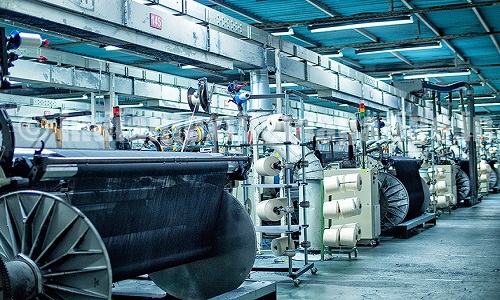"India’s denim segment, with close to 10 per cent market share of the textile industry, is expected to witness deterioration in credit profile in the absence of improvements in realisations in FY18, says a recent report, ‘Stable Input Prices, Fiscal Incentives to Support Textile and Cotton in FY18’, by India Ratings and Research (Ind-Ra). Denim’s operating margins is slated to fall 10-11 per cent in FY18 owing to cost inflation amid surplus capacity in denim standard products with low cotton content."

India’s denim segment, with close to 10 per cent market share of the textile industry, is expected to witness deterioration in credit profile in the absence of improvements in realisations in FY18, says a recent report, ‘Stable Input Prices, Fiscal Incentives to Support Textile and Cotton in FY18’, by India Ratings and Research (Ind-Ra). Denim’s operating margins is slated to fall 10-11 per cent in FY18 owing to cost inflation amid surplus capacity in denim standard products with low cotton content. Ind-Ra has estimated prices to moderate in second half of FY18. However, the denim surplus situation and inventory losses are likely to pressurise margins.
Level playing field for Manmade fibres

Meanwhile, the man-made fiber industry is looking for a level playing field for the taxation of cotton, which is exempt from indirect taxation. If cotton is brought under the Goods and Services Tax (GST), then cotton fabrics including denim sector’s profitability may come under pressure in the transitory period. Raw cotton prices have increased by 32.8 per cent YoY in March 2017 and Ind-Ra expects it to remain high until first half of FY18. For denim manufacturers, cotton forms more than 35-40 per cent of the total raw material requirement. For many basic denim fabric manufacturers catering to domestic consumption average realisations remained steady, despite higher cotton prices in nine months of FY17.
However, some of them have been able to increase realisations for Q4 of FY17 partly passing the cost inflation with a lag. Denim garment players are likely to perform better than fabric players, as retail margins may sustain as fabric prices remain under pressure.
Future Prospects
The research agency expects the denim sector will post robust volume growth of over 10-15 per cent in line with the past trend along with rising disposable incomes, rapid growth of the retail sector, westernisation trend, young population demographics, and versatility of denim as a fabric. However, Ind-Ra views capacity addition is growing at a faster rate. Moreover, existing capacities will face competition from New Age cost efficient plants.
The denim fabric industry is cyclical in nature and characterised by periods of excess capacity followed by narrowing the demand-supply gap. The apparent short project pay-back has encouraged a number of denim fabric manufacturers to put up additional capacity, higher than the estimated demand growth. Further capacity additions are likely to keep domestic competitive pressures heightened. As per CMIE data, a moderate level of new capacity ramp-up is underway in FY18. This includes capital expenditure for expansion and backward integration by a few companies namely, Nandan Denim, Raymond Uco Denim and RSWM.
The credit profile for most players has come under pressure due to the stretched working capital cycle and debt-led capacity expansion in the backdrop of operating margin pressure. Aggregate peer set net leverage (Net Debt/EBITDA) increased to 4.59 in first half of FY17 compared to 2.83x in FY16. The working capital cycle has got stretched to 61 days in first half of FY17compared to 54 days in FY16, on account of the high credit period and inventory holding for the new capacity ramp-up. Increased competition in the international arena and higher receivable days will impact the exports profitability.
Ind-Ra foresees that the credit profile of value-add export-oriented manufacturers will remain robust. Industry players with diversified revenue lines with a mix of man-made textile products are better placed than the pure denim players. Also, companies with strong liquidity, low leverage and short working capital cycle are better placed to face the challenging times.












